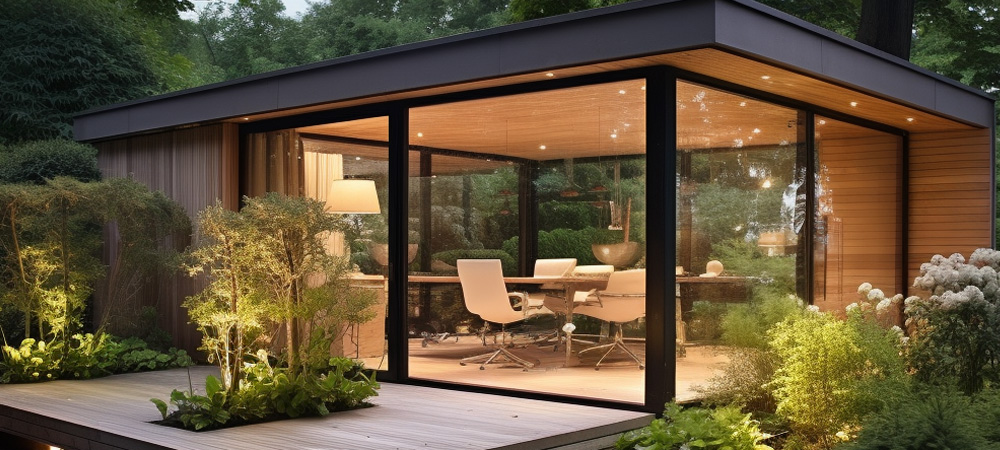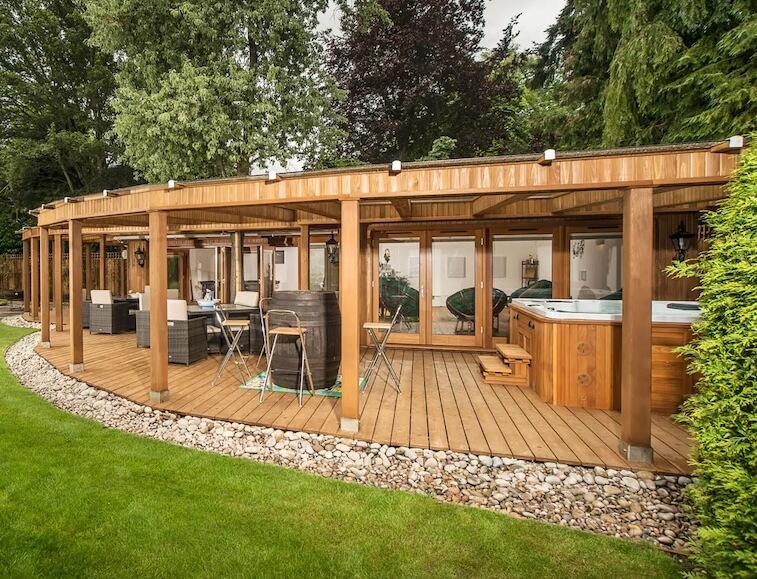Recommended Advice On Planning Permission On Garden Rooms
Wiki Article
What Planning Permission Are You Required To Get For Your Garden Rooms Etc In Relation To Conservation Areas?
When making garden rooms, conservatories outhouses, garden offices or extensions within conservation areas, specific restrictions are in place to protect the character and appearance of the areas designated for conservation. These are the most important considerations when planning permission is required within conservation areas:
In conservation zones, any structure or extension that is expected to be permitted to develop still need planning permission. This includes gardens, sheds, and outbuildings.
Size and Scale
The planning authority can require permission for structures in any size if the dimensions are deemed as detrimental to the conservation zone. The scale and size of new structures or extensions are regulated more tightly than those that are in zones with no designation.
Location within the Property:
It is more usual to need planning permission for additions and structures which are situated at the front or the sides of the home. The rear structures could also require permission if the structures are seen from public areas or affect the general nature of the property.
Materials and Design:
Design and materials are essential in conservation zones. It is crucial that any new construction, or extension, uses materials that match the historic or architectural significance of the locality. To meet these standards, you'll need planning permission.
Demolition:
Planning permission is generally needed in conservation areas to make sure that the changes made are in line with an area's distinctive character.
Height Restrictions
In conservation areas, there are more strict restrictions on height. Any structure taller than 2.5 meters, and especially within 2 meters of the boundary must be subject to permission for development.
Effect on the surrounding areas
Planning permission is required if the building or extension proposed has an impact on the visual setting or appearance of the Conservation Area as well as the views that enter and leave the Conservation Area.
Building use:
Planning permission might be required regardless of whether the garden area or outbuilding falls within the allowed dimensions. This could result from an alteration in the use of the house.
Extensions and Alterations:
The majority of extensions that change the appearance of the building or surpass the limits of volume or size are subject to approval for planning. This includes conservatories, and other major alterations.
Curtilage Structures:
In a conservation area or within the boundaries of a listed property require approval from the planning department. This applies to the construction of new outbuildings and extensions.
Trees that are protected
The trees in conservation areas are protected. The consent for tree works could be required if you are planning to build a structure which will impact trees.
Local Authority Guidelines
Local planning authorities set guidelines and limitations that are specific to each conservation zone. These may include specific guidelines regarding what's permissible or not, adapted to the particular characteristics of the region.
In summary, to obtain planning permission for conservation areas you need to consider the way your conservatory or garden room will impact the area's historical and architectural character. It is essential to speak with your local authority prior to when making plans for the plan. This will ensure that it complies with any relevant guidelines and regulations. View the recommended garden room wiring diagram for blog examples including garden rooms near me, 4m x 4m garden room, how to lay decking on soil, garden rooms hertfordshire, garden rooms near me, garden rooms hertfordshire, what size garden room without planning permission, ground screws vs concrete, outhouse builders, out house for garden and more.

How Tall Can You Build In A Garden?
In the case of building conservatories, garden rooms, outhouses, garden offices, or extensions, limits on height determine if planning permission is required. These are the most important height-related factors to consider:
The height of an outbuilding that is detached or extended should not exceed 4 meters when it is a dual-pitched roof (such as Gable roofs).
If you own a flat roof, a single-pitched roofing, or any other kind, the maximum height cannot exceed 3 meters. ) The height of the roof must not exceed 3 meters.
Limits of proximity:
The maximum height of a structure that is not more than 2 meters from the boundary cannot be greater than 2.5 meters. This is applicable to sheds, garden rooms and other outbuildings similar to it.
Eaves Height:
The length of the eaves (the distance between the roof's lowest point up to the topmost eaves height) of any structure cannot exceed 2.5 metres.
Conservatories or Extensions
The maximum height of a rear extension that has a single story cannot exceed 4 meters. The height of the roof and any parapet walls are included.
Side Extenders
Side extensions can be limited to a maximum of four meters. They cannot be wider than the original home.
Special Roofs
The roof of structures with a roof that is flat can only be built to a maximum height of three meters.
Additional Restrictions to Designated Areas
In conservation zones, in Areas of Outstanding Natural Beauty(AONB) and other areas that are designated, stricter limitations on height can be imposed and approval for planning may be required for construction that would otherwise fall within the permitted development rights.
Buildings within National Parks
National Parks can have height restrictions that are similar to those of designated zones. Permission for planning is required.
Design of the Roof
It is important to consider the length (excluding chimneys, antennas etc.). Consideration should be given to the elevation of the highest portion of the roof (excluding chimneys or antennas.). Planning permission will be required if your highest point is higher than the maximum development allowed.
Effect on Neighbours:
Even if the structure is within the height limits that are permitted the planning permit may be required if it significantly affects privacy, light, or view of neighboring properties.
Maximum Height Total:
The total height of any structure must not be more than 4 meters. For instance, a office in the garden with a roof that is double pitched should not exceed 4 meters at its highest point.
Decking or Platforms
In order for the structure to not need planning permission The platform or decking that is attached to it cannot be higher than 0.3 metres above the ground.
Make sure to inquire with your local authorities about the latest modifications and regulations. Even if you believe your project is within the scope of generally permitted development however, there could be local differences that require approval from the planning authority. Read the top rated garden room office hertfordshire for website info including garden rooms near me, outhouse buildings, garden rooms, out house, garden office electrics, garden room planning permission, garden room heater, outhouses, garden out house, garden out house and more.

Limitations On Location: What Authorizations Are Required For Garden Rooms As Well As Other Structures?
The area of the garden rooms or conservatories, along with outhouses, office buildings and garden offices could be a major factor in determining if planning permission is needed. Consider these key factors when deciding the location of your home The distance from boundary
Any building within 2 meters of the property boundaries cannot exceed a height of 2.5 meters. If the building's height exceeds this amount, then planning permission is required.
Front of the Property:
Buildings or extensions that are constructed in front of the principal elevation of a house (the face-facing side) typically require approval for planning. This is because permitted development rights generally prohibit them.
Right-hand side of property:
Side extensions are subject to height and size restrictions, and may require planning permission when they extend past the existing side wall.
The rear of the property
Garden rooms and rear extensions located at the back of the property are subject to size and height limits. If the expansion exceeds the allowed limits, a planning permit is required.
Designated Areas
In conservation zones, Areas of Outstanding Natural Beauty (AONB), National Parks and World Heritage Sites, stricter control is in place. Planning permission is required for any new structure regardless of the dimensions.
The listed buildings:
List building properties are subject to stricter rules. Any construction or alteration will require planning permission and listed building approval regardless of its place of construction.
Green Belt Land:
The construction of green belts is strictly prohibited to protect open space. Sometimes, special permits are required for new construction or major changes.
Flood Risk Zones
If the property is located in an area at risk of flooding, there are additional regulations to make sure the new construction doesn't increase the risk. Planning permission and possibly an assessment of the risk of flooding could be required.
Urban vs. Rural Settings:
Rural and urban settings have often different regulations. Rural properties can enjoy a more relaxed approach to limitations, like the size or location of outbuildings.
Highways and Public Rights of Way:
Planning permission may be needed if the structure is in close proximity to highways, public rights-of way or roadways to ensure that it doesn't obstruct safety, views, or access.
Shared ownership of or leasehold land
If the property is leasehold or are part of a shared ownership plan further authorization from the freeholder, or managing entity might be required. Planning permissions may still be required based on local regulations.
In the vicinity of other structures:
It could be necessary to get planning permission if a new structure is going to be constructed near the existing buildings or structures, particularly near neighbouring properties. This will ensure that the structure or land adjacent to it is not negatively affected.
It is recommended to always contact your local authority on planning to receive advice specific to the location of your home and property. The regulations can be different depending on the local policies. To avoid legal issues it is important to follow the restrictions that apply to you. Check out the most popular my outhouse for more tips including composite garden office, how to lay decking on soil, outhouses, my outhouse, outhouses for garden, how to get power to a garden room, luxury outhouse, do you need planning permission for a garden room, copyright garden buildings, ground screws vs concrete and more.
